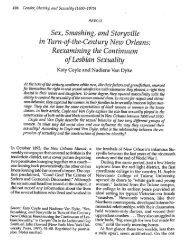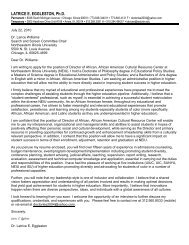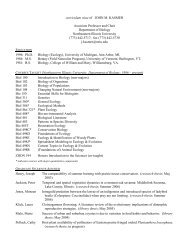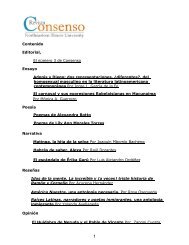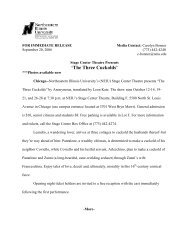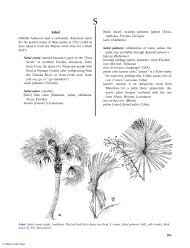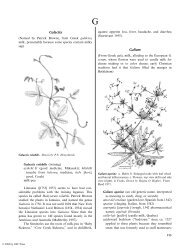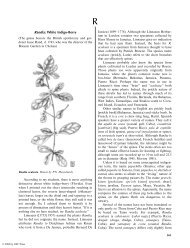Herba Cana - Northeastern Illinois University
Herba Cana - Northeastern Illinois University
Herba Cana - Northeastern Illinois University
Create successful ePaper yourself
Turn your PDF publications into a flip-book with our unique Google optimized e-Paper software.
© 2004 by CRC Press<br />
538 Florida Ethnobotany<br />
species in his country. In doing that he moved a species<br />
Linnaeus called Polypodium lonchitis into his new<br />
genus. That species is now known to range from<br />
Europe to western North America, with isolated<br />
localities around the Great Lakes, Newfoundland,<br />
and Nova Scotia.<br />
Later, André Michaux discovered the most common<br />
species in eastern North America in 1803, and they<br />
were given their modern name in 1834. Unlike some<br />
ferns, these have a comparatively rich history of uses.<br />
Hamel and Chiltosky (1975) confirm that the<br />
Cherokee ate the fiddleheads. We question that<br />
because neither Hedrick (1919) nor Fernald et al.<br />
(1958) list the plants.<br />
The more common application of the plants was as<br />
medicine. The Cherokee used the plants as an emetic,<br />
and to treat rheumatism, chills, fever, stomachache,<br />
bowel problems, and toothache (Hamel and Chiltoskey<br />
1975). The Iroquois treated cramps, convulsions,<br />
diarrhea, fever, and rheumatism, used it as a blood<br />
purifier, and as an emetic for dyspepsia; it was taken<br />
before and after birth to clean the womb. The Malecite<br />
and Micmac chewed roots to relieve hoarseness<br />
(Moerman 1998).<br />
Pontederia<br />
(With this name, Linnaeus commemorated Italian<br />
physician Guilio Pontedera, 1688 /1757, professor at<br />
Padua and also the prefect of the Botanical Garden of<br />
Padua from 1719 to 1757)<br />
Pontederia cordata (heart-shaped, the leaves)<br />
hicaknâ:blo:cî [hitcakanablotci] (hicakna, feraltaro,<br />
a:bi, replica, lo:ci, black, Mikasuki; see<br />
Sagittaria for more on etymology); hikacha nabe<br />
(hicakna, feral-taro, a:bi, replica, Mikasuki)<br />
hishi shafuha (hesse, leaf, cofokne, pointed, Creek)<br />
pickerel [pike]-weed (USA)<br />
wampee (it is white, Shawnee); wómpí (Massachusetts)<br />
Linnaeus ([1753] 1957) knew this species from<br />
publications by several previous authors before he<br />
studied the living plants at the Hortus Cliffortianus.He<br />
knew only one, but there are now five American<br />
species in Pontederia (Mabberley 1997).<br />
Although Sturtevant (1955) was told this herb was<br />
useless, seeds may be eaten directly from the plant,<br />
boiled as cereal, or dried for future use (Fernald et al.<br />
1958). Dried seeds were ground and made into flour<br />
for making bread (Morton 1968b).<br />
Farther north, the Malechite, Micmac, and Montagnais<br />
people used the plants for medicine. The<br />
Pontederia cordata. a. Habit. b. Flower. c. Revolute-coiled<br />
perianth after flowering. Drawn by Vivian Frazier. From<br />
Correll and Correll 1972.<br />
Malechite of New Brunswick and Micmac of Nova<br />
Scotia used Pontederia as a contraceptive (Moerman<br />
1998). The Montagnais of eastern Quebec and Labrador<br />
made a treatment for ‘‘illness in general’’ from<br />
the herbs.<br />
Populus<br />
(Classical Latin name for the genus, maybe referring<br />
to people; or perhaps from Greek paipaloo, shutter, or<br />
paipapalloomai, tremble, vibrate)<br />
Populus deltoides. From Sargent 1905.





